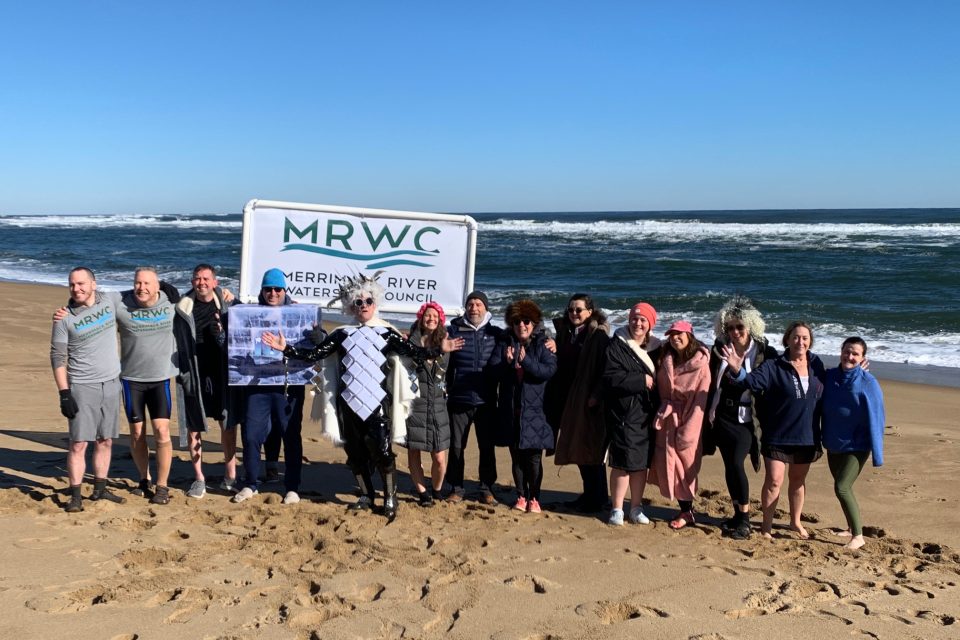REGIONAL — To raise money to continue the battle to clean up the Merrimack River, Curt Rogers, dressed as “King Sturgeon,” and 11 more hardy souls plunged into the cold Atlantic Ocean off Plum Island last month. Seventy fans watched from the shore. Rogers dressed as
The stunt, which raised almost $9,000, was what the new executive director of the Merrimack River Watershed Council called “a blast.” He plans to do it again next year and double the amount of money raised and the number of “plungers.”
Probably in hopes of encouraging more to join in the plunge next year, Rogers said, “The water is actually warmer than the air. It’s not that bad.”
The air temperature on that Sunday morning was 35 degrees.
Rogers, who has been at the council for less than a year, brought the idea of an artic plunge on a winter day from a previous non-profit organization he worked for in Boston. The plunge into the Atlantic was part of a plan to attract more private donations.
Only 10 to 15 percent of the watershed’s funding comes from private donations. Most of its revenues come from state and federal grants to pay for water quality testing, water testing studies and reconstruction of shoreline vegetation, dams and culverts along the river.
Dyke Hendrickson, author of Reclaiming the Merrimack: An Action Plan to Clean the River, wrote: “The Watershed Council is important because it spans the two states through which the river flows: New Hampshire and Massachusetts. Also, it is one of the few groups that consistently advocates for the river. Some state and nonprofit groups have the river on their agendas, but they do not seem energetic in their support.”
Probably the biggest challenge Rogers and his team that includes John Macone, vice president for policy and education, face is fighting river pollution. While much improved over previous decades when the river was lined with polluting industries that dumped red, orange and green dyes into the river, the river today is contaminated with untreated sewage.
During rainstorms, sewage is dumped into the river from municipal treatment plants upriver that are overwhelmed with a combined flow of rainwater and sewage, known as Combined Sewage Overflows (CSOs).
Rogers, who wore the sturgeon wet in honor of the Merrimack’s rebounding short nosed sturgeon population, said the council is often thought of as “a Debbie Downer” because it has to tell people not to swim or allow their dogs to swim in the polluted river. But the untreated sewage in the water can cause serious intestinal problems, skin rashes and e. Coli infections through cuts in the skin.
“It is very unpleasant,” Rogers said.
The council’s water testing crews were very busy last year, one that saw extensive rainfall and large number of CSOs. “Last year was terrible,” Rogers said.
Thanks to a grant, the council is expanding its testing the river water for microplastics in a pilot program. It will compare the presence of the plastic particles during wet and dry seasons.
The council also repairs vegetation along the shoreline 25 to 100 feet into the river. The vegetation acts as a buffer, keeping stormwater runoff filled with contaminants like oil and fertilizers out of the river.
It is also awarded grants from the federal government to repair dams in the river and culverts that are too small.
For more information about the watershed council, visit merrimack.org.
Watershed Council Fighting for the Merrimack
Tuesday March 19, 2024

Curt Rogers, dressed as a sturgeon, and the other faithful plungers.



